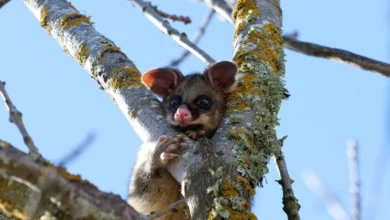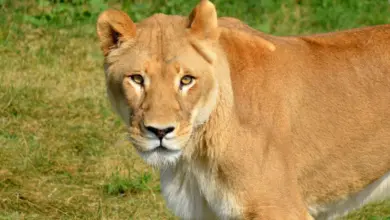Introduction
Quolls are small carnivorous animals found in Australia and New Guinea that resemble cats. Since it is a marsupial, its young are carried in a pouch. Quolls can be distinguished from other animals by their spotted hair, long tails, and pointed snouts. They are nocturnal hunters who feed on small animals, reptiles, birds, and insects. Quolls, despite their adorable look, are adept predators and are essential to the balance of the ecology. However, they suffer risks like diseases, imported predators, and habitat degradation, which has resulted in the classification of numerous species as endangered.
Other carnivorous, or meat-eating, marsupials larger than quolls were in Australia before humans, and they enjoyed killing and devouring quolls. However, the majority of Australia’s original marsupial predators were exterminated by humans.
But humans also introduced other predators, including foxes and dogs, which now hunt, kill, and consume quolls. Because of their initial origins, these predators are referred to as “introduced” species. Quolls thus lost one group of predators but gained another. Regarding diet, quolls primarily consume insects, small mammals, and birds.

1. Foxes
Foxes are quoll predators. Red foxes were introduced to Australia, a country where quolls are native. This had a huge negative effect on the native species, including quolls. Being expert hunters, foxes can take down a wide range of prey, including small to medium-sized mammals like quolls.
For example, their smaller size and preferred habitat make eastern quolls more susceptible to fox predation. When given the chance, foxes are known to hunt quolls, and in many places, their presence has led to the reduction in quoll populations.
In Australia, efforts are being made to manage fox populations and their effects on local animals to save species such as quolls against exotic species that pose dangers through predation.
2. Feral cats
Quolls are seriously threatened by feral cats, especially in Australia, where both species are prevalent. Small to medium-sized carnivorous marsupials and quolls are endemic to Tasmania, New Guinea, and Australia. Feral cats are extremely skilled hunters and have been observed to pursue a variety of prey, including smaller animals. Small mammals like quolls have been linked to the loss and decline of many native species due to feral cats.
Feral cats may have a major effect on quoll populations. Cats can easily prey on quolls, particularly in situations where their numbers are already under stress from habitat loss, competition from other animals, or other causes. Quolls are a direct target for feral cats, who pose a threat to them by sharing food supplies and spreading illnesses.
Strategies to manage feral cat populations are frequently incorporated into efforts to preserve quoll populations. This can involve reducing the number of feral cats in places where quolls are found by techniques like trapping, baiting, and sterilization programs. Furthermore, by fostering healthier ecosystems that support quolls and their prey species, conservation, and habitat restoration initiatives can lessen the likelihood that feral cats will hunt on them.

3. Dingoes
Quolls can be preyed upon by dingoes, especially in regions where their ranges overlap. In many Australian ecosystems, dingoes are the top predators and have been observed to hunt a wide range of food, including tiny to medium-sized mammals like quolls.
Quolls may be more susceptible to dingo predation, particularly if they are young or weak due to disease or injury. As expert hunters, dingoes are well-known for their scavenging habits. Depending on the availability of prey and the social dynamics within the dingo population, they may hunt alone or in packs.
According to research, quoll populations may be affected differently by dingoes based on several variables, including the nature of the habitat, the availability of prey, and competition from other predators. Dingoes may put a lot of pressure on quoll numbers in certain places where dingo populations are high, and quoll populations are low. On the other hand, quolls and dingoes might get together in some places without facing a lot of predator pressure.
4. Snakes
Snakes are common predators of quolls. Many quoll species can be threatened by snakes, including pythons and other venomous species like brown and tiger snakes, which are found in Australia.
As sly hunters, snakes frequently use ambush techniques to capture their prey. Because they are relatively small mammals, quolls can attract the attention of snakes, particularly if they come into contact with places like woodlands, grasslands, or rocky outcrops where they share a common environment.
But quolls are not helpless against snake attacks. If a snake were to approach them, they could defend themselves with their razor-sharp teeth and claws. Furthermore, in certain situations, their speed and agility might help them avoid predators.
Overall, snakes can prey on quolls, but the degree of predation varies based on several variables, including the species of snake and quoll involved, the available habitat, and the environmental circumstances.
5. Tasmanian devils
Although Tasmanian devils are occasionally found to scavenge on animal carcasses, including quolls, and are known to be opportunistic feeders, they are not usually thought of as the main predators of healthy adult quolls. They might, however, indirectly threaten quoll numbers by competing with them for food and habitat, particularly in Tasmania, where both species are native.
Tasmanian devils may occasionally feed on young or wounded quolls, although this is more likely to be an isolated incident than a major influence on the dynamics of the quoll population. Due to the Tasmanian devil’s bigger size and more aggressive behavior, the main dangers to quolls from this species would be competition for resources and possible displacement from acceptable habitat.
6. Humans
Humans can be quoll predators, but not in the same way as natural predators. Humans put a lot of pressure on quoll populations through a variety of activities. Deforestation, urbanization, and agricultural growth all contribute to habitat degradation, which reduces quoll population density by limiting quolls’ access to resources and space.
Roadkill is another problem that quolls face when they travel across roadways that cross their habitats. This is a result of human infrastructure development intruding on their natural areas. Erroneous beliefs regarding quolls as nuisances or hazards to cattle can occasionally result in deliberate persecution by humans by techniques such as trapping, shooting, or poisoning.
Although it is not common, illicit quoll hunting for profit or pleasure can make them even more vulnerable. Furthermore, by upsetting ecosystems and reducing the availability of prey, human-caused problems, including pollution, the introduction of alien species, and climate change, cause indirect harm to quolls.
The goal of quoll conservation efforts is frequently to mitigate these dangers brought about by humans by implementing strategies such as habitat preservation, the creation of wildlife corridors, coexistence education campaigns, and regulatory frameworks to control invasive species and hunting.
Conclusion
The quoll’s eating habits highlight the critical function that this species plays in its ecosystem as a predator and prey. The quoll is a carnivorous marsupial that feeds on a wide variety of tiny vertebrates, invertebrates, and sometimes carrion. Its adaptable eating habits enable it to survive in a variety of environmental settings.
The intricate interactions among food webs are highlighted by the fact that larger predators like foxes and wild cats exert pressure on the quoll itself. Comprehending the complex interrelationships among the food sources of quolls illuminates the biological dynamics of their environment and underscores the significance of conservation initiatives in preserving this exceptional and indispensable species.




